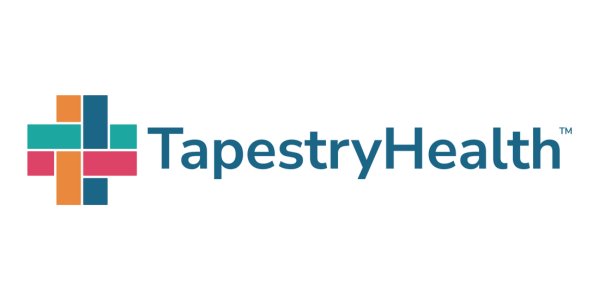ADVERTORIAL
At its most basic, health care has not changed much—a skilled clinician diagnosing and treating ailments is as old as time. But everything else has changed, and nowhere is that more apparent than in the skilled nursing industry.
 Today’s nursing homes are expected to accept higher acuity patients with multiple co-morbidities, more psychiatric patients, and more patients that a few years ago would not even be considered for discharge. And if they are unable to provide the necessary care and the patient is re-hospitalized, there are fines and reputation issues that can impact the facility for years. Add to that more regulatory and compliance issues than ever before, along with the cost of maintaining a modern facility, and it is easy to see why America is losing skilled nursing facilities at a frightening pace.
Today’s nursing homes are expected to accept higher acuity patients with multiple co-morbidities, more psychiatric patients, and more patients that a few years ago would not even be considered for discharge. And if they are unable to provide the necessary care and the patient is re-hospitalized, there are fines and reputation issues that can impact the facility for years. Add to that more regulatory and compliance issues than ever before, along with the cost of maintaining a modern facility, and it is easy to see why America is losing skilled nursing facilities at a frightening pace.
One solution can be found in technology, and the pressure is mounting from all sides for SNFs to upgrade their technological capabilities. Patients, families, and, most importantly, hospitals are placing more weight on the level of advanced technology available to ensure the highest level of care.
Every facility in the country has been forced to look at technology not as an advancing foe but as the potential savior. Yet adoption is still dangerously slow. In many facilities, half-measures provide the illusion of advanced technology while never fully embracing it.
An administrator needs look no further than their electronic health records (EHRs). While you may have a computerized system, that system is only as good as the data that populates it. Are your nurses taking vital signs and then entering them into the system at a later time? Are all those entries accurate? How often is Patient A’s data entered as Patient B? And what are you doing with the data? Who is looking at it? Who is turning that data into usable directions that will improve care and boost efficiency among the nursing staff?
Telemedicine is another valuable tool that too often passes for a facility’s primary technology. Assuming that your telemedicine provider is keeping up with the latest technology, it can be a valuable, even life-saving, tool. But it is no longer enough.
In the current health care environment, a skilled nursing facility needs the most advanced technology available. Most facilities conflate that with the most advanced technology they can afford, and that may be one of the biggest reasons for failing to take advantage of what is available.
The other is simply fear. Learning something new can be difficult. And new technologies can be surpassed by even newer ones. If your nurses need a 10-year-old to program the TV (and many of us do), they might not be quick to embrace technology. It is incumbent on the facility to research and install technology that is both advanced, simple to use, and one that will stay current. Companies like TapestryHealth that know the SNF industry and have been at the forefront of vetting and incorporating technology specifically geared for the day-to-day operations of a SNF are delivering exactly that.
Technology, like continual patient monitoring, not only eliminates human error—no more heart rates written on a notepad for later entry into the EHR—but collects data non-stop and can alert a nurse to any sudden change that might indicate the need for medical intervention.
TapestryHealth is one company that utilizes that data and similar data from thousands of patients in hundreds of facilities from coast to coast to create a pool of information, treatment data, and outcomes that can be used to power predictive modeling programs. These advanced systems can predict with startling accuracy potential outbreaks of dangerous infections and other conditions that often lead to hospitalizations and sometimes even to the death of a patient, as much as 72 hours in advance of any visible symptoms. That has been proven to be enough in many cases to prepare the facility and the patient and avoid any acceleration of the issue and potential hospitalizations. Moreover, advances in radar wave technology assure complete privacy and 100 percent contactless monitoring.
TapestryHealth’s technology solutions are vetted by nursing home professionals—doctors, nurses, administrators, and operations executives from within the industry, who are uniquely suited to evaluate each one and make sure it delivers solutions specific to the needs and the environment of a nursing home. And TapestryHealth doesn’t charge the facility anything for its services. Everything they provide is covered by public or private insurance. What’s more, TapestryHealth guarantees to keep its customers updated with their latest services at no cost.
While these devices and services may sound terribly complicated and may even sound like nurses are being asked to learn a whole new health care language, the fact is that the learning curve is dramatically short and easy. Health care in nursing homes is not what is changing; it still comes down to a skilled, compassionate clinician providing bedside care to an elderly patient. What technology has done is elevate the quality, effectiveness, and timing of that care to a lifesaving level.
To understand more about technology in skilled nursing facilities, and how it can impact the level of care, reputation, and profitability, contact TapestryHealth at (203) 721-6822 or visit TapestryHealth.com.
Provider Magazine includes information from a variety of sources, such as contributing experts. The views expressed by external contributors do not necessarily reflect the views of Provider Magazine and AHCA/NCAL. Learn how to submit an article.